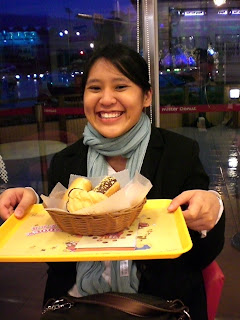What exactly are virtual communities? Although people have different definitions about what virtual communities are, there is one integral part that runs through all the definitions, and that is that communication is the most important part of maintaining communities. With the invention of the Internet and the increased use in computer-mediated communication (CMC), this online communication method has become one of the most rapidly growing ways for people to communicate with others from all over world. This is because CMC “will do by way of electronic pathways what cement roads were unable to do, namely connect us rather than atomize us, put us at the controls of a ‘vehicle’ and yet not detach us from the rest of the world” (Wellman & Gulia, 1996, para. 5).
With that in mind, this rapidly growing communication channel has resulted in websites such as Friendster.com, and Twitter.com being set up. So are these virtual communities? According to Rhinegold, he said that virtual communities are “social aggregations that emerge from the [Internet] when enough people carry on those public discussions long enough, with sufficient human feeling, to form webs of personal relationships in cyberspace” (Fernback & Thompson, para. 23). Taking the example of Twitter.com, it was set up so that people can stay “in touch and keeping up with friends no matter where you are or what you’re doing” (“Twitter”, 2007, para. 1).
What sets Twitter apart from other websites is that essentially it is about users letting other people know what they are doing at that very moment. It also allows users to keep in contact with their friends and find out what they are doing as well. Twitter is also a virtual community because it allows communication and interaction to flow amongst people from all over the world.
On Twitter, even though it is mainly used as an update of what people are doing, it also allows users to “use words on screens to exchange pleasantries and argue, engage in intellectual discourse, conduct commerce, exchange knowledge, share emotional support, make plans, brainstorm, gossip, feud, fall in love, find friends and lose them, play games, flirt, create a little high art and a lot of idle talk” (Fernback & Thompson, para. 26). I also consider Twitter to be a virtual community because there are always people who are constantly keeping in contact with strangers or with their friends.
Although some people may argue and say that websites such as Twitter are not virtual communities, it evident that many people who have used such website think otherwise. It is through such websites that they have been able to communicate with people from other parts of the world and to make new friends. And with its ability that allows users to use Instant Messaging (IM) or Short Messaging System (SMS) to contact with their friends as well, it is definitely here to stay and open up more worlds to other people.
Reference:
Fernback, J., & Thompson, B. (n. d.). [On-line]. Retreived March 15, 2007 from the World Wide Web: http://www.rheingold.com/texts/techpolitix/VCcivil.html
Wellman, B., & Gulia, M. (1996). [On-line]. Retrieved March 15, 2007 from the World Wide Web: http://www.acm.org/%7Eccp/references/wellman/wellman.html
Twitter. (2007). [On-line]. Retrieved March 15, 2007 from the World Wide Web: http://twitter.com/faq
Saturday, 17 March 2007
Subscribe to:
Post Comments (Atom)

No comments:
Post a Comment